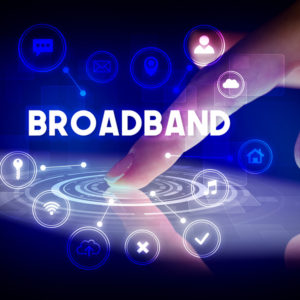During the pandemic, while most of us were relying on broadband to work, study, even confer with our doctor, at least 14.5 million Americans were shut out, literally. President Joe Biden’s American Jobs Plan (AJP) would invest $65 billion to connect homes, schools, and small businesses in remote areas while also aiming to make broadband more affordable to low-income households.
Business Forward has organized hundreds of briefings with local business leaders and policymakers on broadband. We support the AJP’s ambitious mission and budget, but we are concerned that some provisions could delay or derail buildouts – in marked contrast to the simpler, more direct framework offered by Sens. Joe Manchin and John Cornyn.
We must stay focused on what’s really going to get America connected and avoid the waste and fraud that undermined digital divide grant programs under Presidents George W. Bush, Obama, and Trump.
Four simple rules should suffice.
First, target funding to places without broadband. This sounds obvious, but there’s a long, bipartisan history of broadband grant programs from 2000 through 2017 failing to target unserved areas. Six investigations of the Rural Utilities Service (RUS) found that companies receiving grants used the bulk of RUS funds to upgrade existing (mostly suburban) networks rather than extend their networks into unserved rural areas. A 2009 audit found 77 percent of grants were spent on neighborhoods that already had service.
The Treasury Department recently issued guidelines that focus American Rescue Plan broadband deployment funds to areas that are truly “unserved,” but some in Congress propose a higher, 100/100 Mbps standard that would redefine 58 percent of the population as “unserved.” In the name of “future proofing” federal broadband investments, these members risk repeating RUS’s mistake of funding duplicative suburban networks at the expense of those who really need it.
Second, create a low-income subsidy and support digital literacy. Roughly sixty million Americans have access to broadband but cannot afford or don’t see the need to purchase it. During the pandemic, Congress created an “emergency broadband benefit” to help these families. And to get more of their students online, school districts, local service organizations, and broadband companies across the U.S. also provided families with digital literacy training, technical support, and discounted laptops.
But instead of making the Emergency Broadband Benefit permanent, some progressives argue that simply creating more competition will reduce prices enough to convince these families to purchase broadband. It’s an interesting theory, but it would take years to test under the best of circumstances, and research suggests competition alone doesn’t do much to boost broadband adoption. Direct subsidies for low-income families are the smarter approach.
Third, rely on entities with proven success in connecting Americans. RUS funneled money to smaller companies and encouraged new public-private partnerships, much like AJP would. The problem? Building broadband networks requires scale and experience most start-ups, co-ops, and local governments lack.
Consider Jeff Davis County, Texas, population 2,274. An estimated 1,093 have broadband in a county of 2,265 square miles. To close the digital divide here, AJP would run fiber cable to about 1,100 people spread across an area that is nearly twice the size of Rhode Island (population 1 million). Do we really want to leave this task to non-profit start-ups? And do we want to put local governments on the hook for ongoing annual maintenance costs?
Fourth, don’t favor a single technology. Broadband companies invest $70 to $80 billion each year improving their networks, and 5G and satellites are poised to compete with cable and fiber. We know capacity will grow, speeds increase, and new applications proliferate. But we cannot predict which technologies will excel or even survive.
Despite all this, AJP would favor fiber over other competing technologies, because it offers symmetrical upload and download speeds. Symmetry may be appealing in theory, but in practice customers download about 14 times more content than they upload, and no one expects this to change much soon. If picking a winner in technology is risky, picking one on something consumers don’t value – symmetric data capacity – is particularly so.
Manchin and Cornyn have offered an alternative that encourages co-ops and public-private partnerships to compete but wouldn’t rule out established providers. Nor would it impose a technical mandate (symmetry) that ignores how consumers use broadband. And it has clear safeguards to make sure the money is targeted to the unserved areas where the needs are greatest.
We urge Congress to consider the urgency and enormous cost of “what” before it starts experimenting too much with “how.” Go big, but stay focused.

